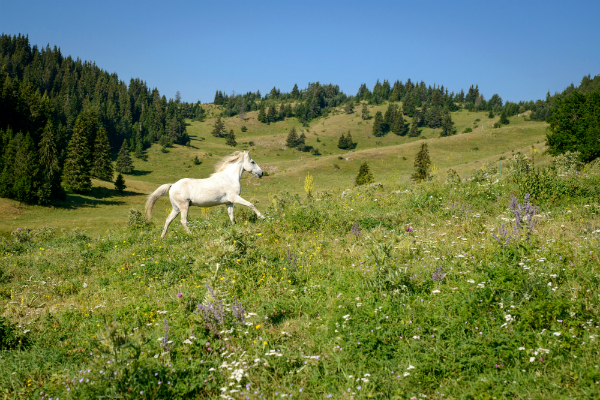There are not many people who know that horses running free within our world help the environment they live within. Most people see these majestic creatures as partners, workers or runners, but not as an important ecological factor of the planet.
The majority of the UK’s wild horse population are semi-feral, which means they have owners but roam free as if they were wild. The only non-owned horses are ponies that have homes in very remote areas of Scotland and on particular mountains in Wales. The ponies represent a lot of the UK’s best-known ancient breeds, the Welsh Mountain, Exmoor, plus the Dartmoor. All of the semi-wild breeds living in the uk play an important role in sustaining their habitat in addition to helping biodiversity flourish. Indeed horse dung is nature’s recycling habit in full swing.
When horses graze for food they don’t eat everything in their path, they pick and choose . Also, different breeds have different ways of eating. The uneven ways of eating typical of horses is signified by vegetation of different heights. Wild horses are continually moving around, removing undesirable vegetation that could otherwise overtake other plants and stop them from thriving. Horses aren’t partial to eating flowers, which gives rare wild flowers a possibility to flourish. As an end result, the wild horses maintain land from unwanted overgrowth and still provide ideal habitats for birds and other small animals to live on.
In the United States, wild horses help the environment too. When some species of horse eat, they very easily breakdown any seeds that enter their system, which causes the seeds to germinate. Wild horses can roam over quite large areas, so seeds get spread over a greater distance.
Horses can also play a critical role in the winter when water sources freeze over. Horses have strong hooves which can break through ice to make the water readily available to them. Animals that can’t break the ice can then access a water source previously unavailable to them, without the horses to aid them they wouldn’t survive as they’d be unable to access any liquid water. There are some beautiful mosaics celebrating this unique horse activity in a couple of castles in the Loire Valley which show just how far back humankind’s appreciation of this skill goes – the mosaics are from the time of Joan of Arc.
ACM Group, an environmental group based in Australia advocate that wild horses, or brumbies as they call them in that part of the world, can provide just about the most valuable contributions to biodiversity and the health of the land that they are known to inhabit.
Where ever they roam, they are known usually as nature’s healers. They play an integral and vital part of the ecosystem that makes up our environment. So we’d like to remember that horses, in all shapes, sizes and colours are absolutely special and wonderful creatures, regardless of their use.
